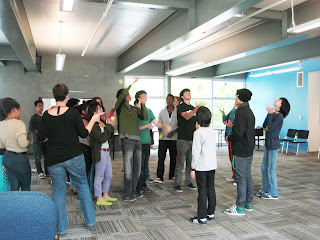Yesterday afternoon, I attended the plenary session given by
Charles Petit, titled “The Present and Future of Science Journalism.” Charles Petit has been in the scientific writing field for
over 40 years. Former president of
the National Association of Science Writers, lead writer for the MIT Knight
Science Journalism Tracker and VP for the Council for the Advancement of
Science Writing, Petit has the accolades and experience to support ANY view on
the state of Science Journalism (however depressing that POV may be). He also has a degree in Astronomy, so
we can guess his favorite scientific topic :)
Wobbling between the possible career paths of astronomy,
education and science writing, I was interested in what he had to say about the
demise of science journalism and the possible future of the field. He gave an engaging lecture on the
common themes of the downturn of newspapers and print media, the difference
between press releases and articles, and how scientific discoveries are communicated in the modern era.
Given my personal affinity for the science education, I was
drawn to the emphasis that Petit placed upon the difference on science
educators and writers. He
offered an anecdote about his experiences, recalling how he was once asked to
be on a committee to discuss and offer advice on science education. As the story goes, he replied something
along the lines of “why are you asking me? I’m not an educator.” He (wisely?) noted that one should
“never tell a reporter he’s an educator.”
While reporters and educators both highlight important aspects of
science, he reminded us that reporters have no formal education, curriculum
development or any experience that makes them qualified as educators.
Yet, what if they did?
What if the next generation of science writers and journalists had educational
training that led to not only informative articles, but articles that took into
consideration how the average reader could learn about the topics at hand. What if each article was not just a report, but a lesson? What if each article
included an inquiry based activity on the page? The possibilities are endless.
Maybe the future of journalism wouldn’t be so sad after all.




